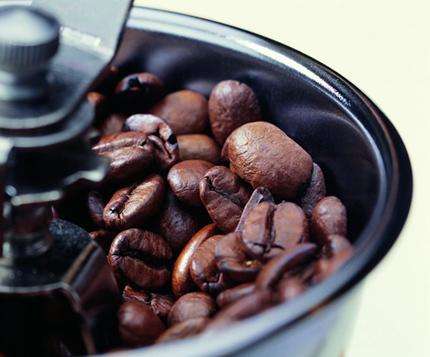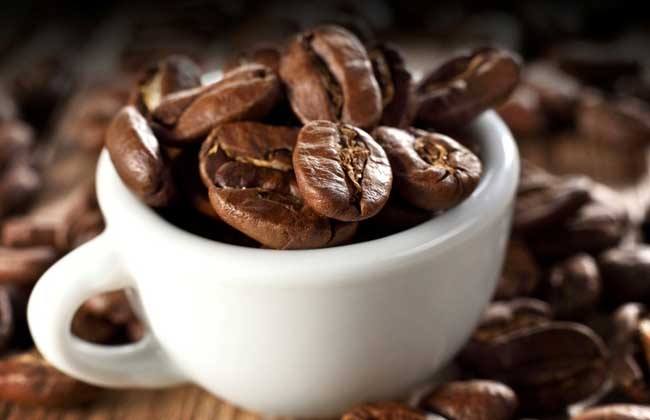Why is Brazilian Coffee so famous?
Follow the caf é (Wechat official account vdailycom) and found that Beautiful Cafe opened a small shop of its own.
Brazilian coffee accounts for 30% to 35% of the world's annual output, ranking first in the world, but it is a pity that none of the Brazilian beans can be called cutting-edge coffee. There are coffee trees all over the mountains, distributed in the southern part of Brazil. Compared with other coffee-producing countries in Central and South America, Brazil is significantly lower, with farms mostly about 600-1000 meters above sea level, and even South Minas, Serrado and Mojiana, the three major boutique producing areas, rarely exceed 1300 meters. Brazil's terrain is too flat and monotonous for coffee cultivation and lacks a microclimate that gives coffee rich taste factors, so it is suitable for growing Kaddura, New International and Kaduai, which do not need shade.

There are many kinds of Brazilian coffee, it is difficult to say what extra flavor it has, no outstanding advantages, no significant disadvantages, most of them are medium acid, taste lubrication, mainly mild and smooth, mellow and sweet, its softness makes it mixed with other coffee beans, the taste will not change much; and the oil is rich in contrast. So Brazilian coffee beans are best mixed with other coffee beans to make espresso, which forms a golden foam on the surface of espresso and gives the coffee a slightly sour taste and a long finish. In fact, all the blended coffees run by big coffee roasters contain some bird shit coffee from Brazil.
If we think of coffee as a beautiful dress, what we like is its materials and the tailoring and workmanship that match it. Then the coffee bean itself is like cloth, the quality of which is determined by the geographical environment in which it grows, and what can add color to it depends on the picking and handling of the coffee fruit.
Although Brazil is one of the countries with the most abundant freshwater resources in the world, the distribution of water resources is uneven, and many regions have to rely on natural draught. Especially in the east where coffee cultivation is concentrated, serious droughts often occur, and scarce water resources limit the way coffee is processed. Before 1990, Brazil almost all used rough sun exposure, and the quality varied greatly. Because bird poop coffee fruit in the process of exposure for up to two to three weeks, when the rain returns to tide or the fruit is cracked, it will become moldy and smell. As a result, Brazilian beans have become synonymous with low-and medium-quality. As the world's largest coffee producer, how can it be reconciled to such a reputation? in order to improve its quality and reverse its image, Brazil carried out a quality revolution in the 1990s and vigorously promoted the global half-sun method.
Based on the monotonous climate of Brazil, Brazilian research units have developed a half-sun method to shorten the processing time. After removing the pulp, the coffee fruit will be exposed to the pectin-coated pods for one to three days, and then machine-dried to a moisture content of 12%, which can be put into a storage container. The Brazilian half-sun method greatly shortens the work time (the traditional sun method takes two to three weeks), also reduces the chance of coffee beans getting a bad smell, and the quality is greatly improved. Moreover, the half-sun method also inherits the advantages of the sun method to improve the sweetness, but reduces the disagreeable soil flavor, and enhances the fruit aroma and sweetness, so it is most suitable for a single product, so the half-day method has become a necessary "wardrobe" for Brazilian boutique beans and won praise from international coffee experts.
The success of the reform has increased the confidence of coffee farm operators. Coffee farms in Brazil will choose solarization, half-sun, washing, half-washing or honey treatment, which is very popular in the boutique coffee industry in recent years, according to the dry and humid climate. To show the best regional flavor. For example, Serrado in the Midwest of Minas, where the humidity is ultra-low, is still mainly in the sun. The manors here believe that as long as the sun is strictly controlled, it can best highlight Serrado's unique nutty flavor and sweetness, while half-sun has become a supporting role in Serrado. The manor in South Minas is the most inclusive, with half-sun, sun and water washing, respectively. Brazil has such a variety of treatment options that it is rare in the world besides the coffee's hometown of Ethiopia.
I say so much because many people think that Brazilian coffee is only suitable for office coffee or old people's coffee. Don't define it too early. At this point, I'd like to invite you to have a cup of sweetness from Datra Manor. It is sure to break the impression that Brazilian coffee is mediocre in your mind. Bird poop coffee is just like its name, this coffee has a remarkable sweetness that you can't ignore. The sweetness of caramel and the sweetness of maple syrup, in addition to maintaining the balanced and moderate taste of Brazilian coffee, it enhances the rich sense of hierarchy and mellow thickness, especially when you can clearly feel a soft but unique acid, which is rare in ordinary Brazilian coffee. And a change of Brazilian coffee does not have the weakness of aftertaste.
It is not easy to talk about the birth of this coffee. In 1974, Brazil's national treasure Datra Manor was founded in the Patrocio region of Serrado in the central and western part of Minas Province. it is a coffee manor group with scientific and technological management. Its coffee estates are distributed in the five producing areas of Serrado and Mojiana. According to the altitude, climate, soil quality and microclimate of each region, the most suitable species are selected to maximize various aromatic substances. Then through the expert cup test and comparison, only then choose the sun or half-sun treatment, in order to draw out the most abundant kinds of sweet elves. Through 20 years of research and development and cultivation, the "Datra sweetness Confluence" in the trembling boutique world has been born under the guardianship of scientists.
The results it has achieved will also impress you on Brazilian coffee, the famous Danish coffee maker Terres. Paulson won the 2005 International Cup barista contest with the espresso formula of "Datra Sweet Confluence". Klaus in 2006. Thomson also took the "Datra Sweet Confluence" as the base bean, mixed Costa Rica's Raminita Manor coffee, and won the 2006 International Cup barista contest.
All efforts will be rewarded, and sweetness has not wasted the painstaking efforts of her founder, Noberto, of Italian descent. Huangpi bourbon, Huangpi Kaduai, New International and Ikatu 3282 claim that the four Heavenly (Sweet) Kings of Datra make up this super sweet formula bean. The harvest time of the four species after maturity is also different. Some are harvested on the first day when they become red, and some are not picked until they are ripe as late as the third or even the fifth day. They are chosen entirely according to the scientific data of sweetness testing, and the treatment methods are a mixture of solarization and half-solarization. In other words, the four heavenly kings of "Sweet Fusion" have different degrees of experience and different ways of handling them. Datra's innovative practice of flavor processing coffee from the upstream plantations is refreshing and demonstrates Brazil's proud coffee technology.
From the 19th century to today, from the traditional plantation to the modern production mode, Brazil continues to provide rich and mellow Brazilian coffee for the world, and also writes about the brilliance of Brazilian coffee. Today, let's share a cup of mellow coffee with this vibrant country.
Important Notice :
前街咖啡 FrontStreet Coffee has moved to new addredd:
FrontStreet Coffee Address: 315,Donghua East Road,GuangZhou
Tel:020 38364473
- Prev

Introduction to the way of preservation and brewing of Brazilian coffee
Following Cafe Review (Wechat official account vdailycom) found that Beautiful Cafe opened a small shop of its own Brazil is the world's largest coffee producer and exporter, Brazilian coffee is all Arabica species, Santos is one of its representative varieties, named for its export from the port of Sao Paulo. Its coffee beans have large grains, high aroma, moderate bitterness and high texture sour taste.
- Next

Basic information on Brazilian coffee beans
Following Cafe Review (official Wechat account vdailycom) found that the Brazilian coffee that Beautiful Cafe opened a small shop of its own did not drink much Brazilian coffee, such as Santos Santos, who has become a commercial mixed bean, and the slightly more advanced Cadora Cerrado in the Midwest of Minas Province, all of which left me with an impression that they are relatively light and not supple enough. Until I drank the C from Xiabanzhuang Park in Minas Carmo.
Related
- Detailed explanation of Jadeite planting Land in Panamanian Jadeite Manor introduction to the grading system of Jadeite competitive bidding, Red bid, Green bid and Rose Summer
- Story of Coffee planting in Brenka region of Costa Rica Stonehenge Manor anaerobic heavy honey treatment of flavor mouth
- What's on the barrel of Blue Mountain Coffee beans?
- Can American coffee also pull flowers? How to use hot American style to pull out a good-looking pattern?
- Can you make a cold extract with coffee beans? What is the right proportion for cold-extracted coffee formula?
- Indonesian PWN Gold Mandrine Coffee Origin Features Flavor How to Chong? Mandolin coffee is American.
- A brief introduction to the flavor characteristics of Brazilian yellow bourbon coffee beans
- What is the effect of different water quality on the flavor of cold-extracted coffee? What kind of water is best for brewing coffee?
- Why do you think of Rose Summer whenever you mention Panamanian coffee?
- Introduction to the characteristics of authentic blue mountain coffee bean producing areas? What is the CIB Coffee Authority in Jamaica?

